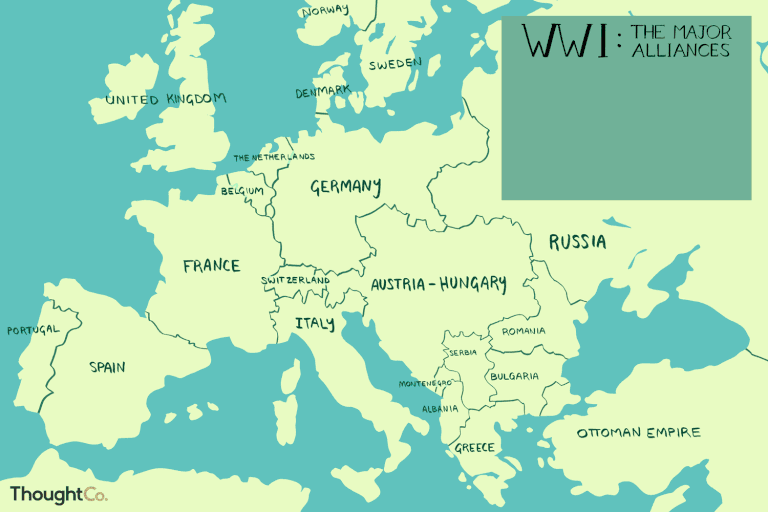
World War 1
It is well known that a single event is attirbuted to the start of World War 1, the assassination of the Archduke Franz Ferdinand of Austria, heir to the throne of the Austria-Hungarian Empire, by a Serbian nationalist on the 28th day of June, 1914 in Sarajevo, Bosnia Herezegovina. But that is a simplistic view. Nothing is that simple. What events, what movements, what philosophies led up to this terrible act?
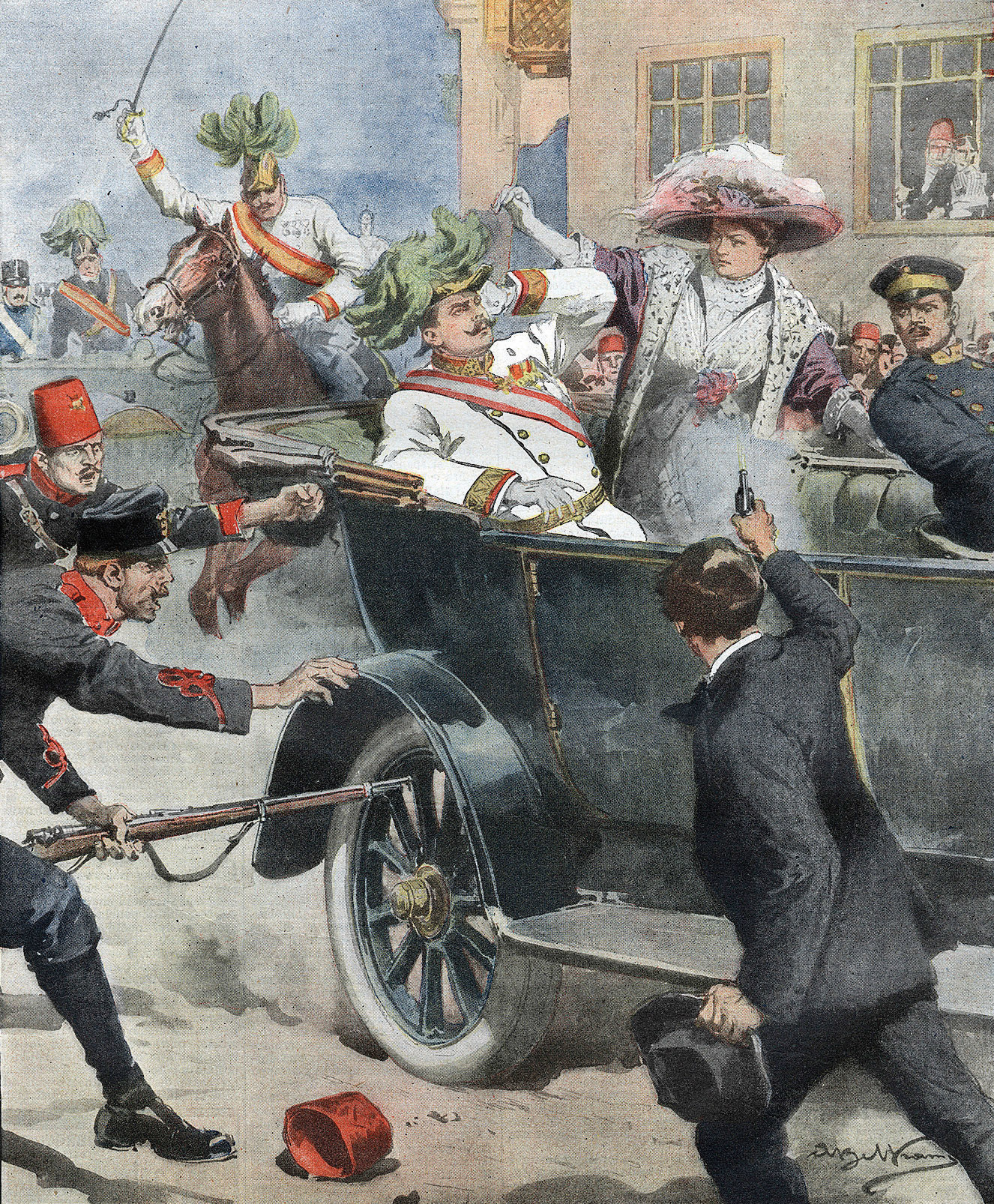
In analyzing problems, we often use a technique called reverse-engineering, working backward through one step-at time until we reach a starting point of a problem. Can we do the same with World War I? Perhaps. As a historian, I have examined the history of Europe over many centuries, identifying what I feel are the events, movements and philosophies that led up and contributed to World War I.
As civilization emerged from the Dark Ages, a system of government emerged. This was rule by strong families who created a dynastic ruling class. This concept of nobility and royalty was bolstered by the Catholic Church which fostered the idea of rule by divine right. Thus royalty and religion were closely entwined. These dynasties ruled over regions of land and sea whose boundaries changed based on warfare and marriage. These dynastic regions were not always contiguous. One European family dynasty, the Hapsburg’s ruled the entire Iberian peninsula containing present day Spain and Portugal, parts of France, Germany, and Italy, Mexico, the East Indies, Belgium, Luxembourg, and even small parts of Africa during the 16th thru 18th centuries.
Eventually, a new concept began to emerge. Ethnic groups within the dynasties began to consider themselves as citizens of regions within the dynasties, and the concept of nations or nationalism began to emerge. This often culminated in these ethnic or political groups revolting against dynasties. These movements included the American and French Revolutions, and the breakup of the mighty British Empire.
The Protestant Reformation beginning in 1517 in Germany diminished the power of the Catholic Church and the marriage of royalty and the church also was less powerful in some areas. To overcome this loss of power, some nations created state churches. The British Empire and the creation of the Church of England is a prime example.
The industrial revolution in the early 1800’s also played a part. The role of workers changed. Industrial entrepreneurs began to gain power in industrial nations, with ability to influence government power.
The creation of the nation of Germany by combining many Germanic city-states under Bismark was a crucial event leading up to World War I. The Russian Revolution overthrowing centuries of rule by the Romanov Dynasty was just as crucial.
The ideas of Fascism, Communism and the economic move in may areas toward socialism also contribute heavily to how people viewed their roles in society.
Combining all of these events, a strong sense of nationalism emerged in the early 20th Century. Trouble between the mighty Austria-Hungarian empire, with its eleven languages and ethnic groups, caused tensions with neighboring counties.
Perhaps the most significant event was the breakup of the Ottoman Empire. This was the cause of two armed conflicts during 1912-1913. These Balkan Wars – often referred to as “Trouble in the Balkans” – deprived the Ottoman Empire of almost all of its European territory during the first conflict. Turkey would not allow Christians control of their portions of the empire, insisting instead of control from Constantinople. Macedonia, Greece, Serbia and Bulgaria revolted and left the Ottoman Empire . The second conflict was between Bulgaria and one side and Serbia, Greece, and Romania on the other fighting over how to divide up the territory taken from the Ottoman Empire. This led to discontent especially in Serbia with the Austria-Hungarian Empire, and eventually to the trigger event, the assassination of Archduke Ferdinand.
Was World War I inevitable?
There are two opposing views. I personally do not know if the war was inevitable. Each viewpoint has merit.
Viewpoint 1- No. it was not inevitable. Source NPR.org. “Without the assassination of Archduke Franz Ferdinand, there would have been no need for rulers in Vienna to threaten Serbia, no need for Russia to come to Serbia’s defense, no need for Germany to come to Austria’s defense – and no call for France and Britain to honor their treaties with Russia – Mar 12, 2014”
Viewpoint 2 – Yes, it was inevitable. “Although the assassination of Archduke Ferdinand was the spark that caused Austria-Hungary to strike the first blow, all European powers quickly fell in line to defend their alliances, preserve or expand their empires and display their military might and patriotism – Apr 16, 2018”
I will point out that real tensions existed throughout Europe. Perhaps if Germany and Russia had stayed neutral, war might have been averted. If World War I was inevitable or not will never be resolved. Historians will always disagree. Some questions can never be definitely answered.
United States involvement in World War I.
Even though WWI had begun in 1914, The United States didn’t enter the war until April 2, 1917. The war ended on November 11, 1918. Why did we delay? Whey did we finally enter the war? These two questions are easy to answer.
Why the delay? Simple, the American public did not feel a reason to enter into a European conflict. Our country was new compared to Europe. We had only been a country for 138 years when World War I started. We were a nation of immigrants. Almost all Americans had family links to Europe, on both sides of the conflict. Italian Americans didn’t want to go to Europe. Italy was a neutral country. Irish Americans were conflicted. Ireland and England were involved in their own conflict. The Easter Uprising of 1916 divided American Irish. German immigrant families often had relatives still in Germany. The Austria-Hungarian Empire had 11 languages and multiple ethnic groups. President Wilson didn’t want war. We were trading with both sides. We tended to favor the allies (Britain, France & Russia) over the central powers, simply because it was easier to get supplies into the allied countries. The central powers were isolated and often blockaded. American business entities were making money from both sides of the war. The U.S. had not been in a major conflict since the Civil War, other than the Spanish-American war of 1898 which lasted less than a year with U.S. losses from combat less than 2000 dead and wounded with combat deaths were just over 400. Americans, including the government and the press did not want U.S. involvement.
Why did we finally enter the war? One word could give that answer. U-Boats! Germany was sinking our merchant ships in the Atlantic, even though they had signed a pact not to do so. But as World War I continued, Germany became desperate. Supplies were dwindling and it appeared that defeat for the central powers was possible. The sinking of the Lusitania, with loss of some American passengers received very bad press in the U.S. Finally, when Germany sunk three U.S. merchant ships in short order, the U.S. government said “Enough.” And President Wilson declared war. The U.S. entry doomed the Central Powers to certain defeat.
Before going into specific battles, there are two issues that need to be discussed. Trench Warfare, and Gas attacks.
Trench Warfare: In the history of warfare throughout the ages, very little can compare to the absolute misery of trench warfare. These wet, muddy, disease ridden deep ditches dug across Europe are horrible beyond description. Rather than describe them myself, there are many movies and documentaries and this link. Trench Warfare
The second item is the use of Gas Attacks. The first large scale use of chemical warfare was in World War I. These were developed to demoralize, injure and kill men in the trenches. The gasses used were tear, phosgene, clorine and mustard. it is estimated that accounted for 1.3 million casualties with over 90,000 fatalities. The U.S. also used gas after entering the war. For further information, use this link. Chemical Weapons WWI
There were many land battles in WW1, This following link discusses 10 most significant battles. This is list of those 10 battles discussed in the link: 1. First Battle of Marne, 2.Gallipoli, 3. Jutland, 4.Verdun, 5. Battle of the Somme, 6. Brusilov Offensive, 7.Third Ypres Campaign, 8.German Spring Offensives, 9. Battle of Amiens, and 10. Battle of Megiddo.
The United States was involved in the following battles: Battle of Chateau-Thierrry, Battle of Belleau Wood, Battle of Saint-Mihiel, and the Meuse-Argonne Offensive. American Battles
Since I am a Marine Corps veteran, The Battle of Belleau Wood is of special note. It is one of the most famous battles for the U.S. Marines. The first U.S. Medal of Honor of World War I was earned by Gunnery Sergeant Earnest A. Jansen, who stopped an advance of 12 German soldiers and protected the rest of his unit. Many historians consider this battle of Jun 1918, the defining event in the history of the U.S. Marine Corps. An article in Marine Corps Times gives more information.
The Battle of Gallipoli also needs further discussion. Russia, being one of the allies, had severe problems during WWI. The Germans had blockaded the North Sea and made it impossible to resupply Russia. Food and ammunition were in shortage. The only possibility was to try to take supplies to Russia, through the Mediterranean, up the Dardanelle (Ottoman) Straits, linking the Mediterranean, Aegean Sea and the Black Sea. Russia’s southern border (Ukraine today) was on the Black Sea. The allies called upon the newly formed Australia-New Zealand Army Corps (ANZAC) to make the attempt. Because the strait was heavily mined by Turkey, an overland approach up the Gallipoli peninsula became necessary. This 10 week battle was did not work. It caused immense casualties on both sides, The allies consisting of ANZAC, Irish, French, Egyptian, Maltese, and the Russian Naval forces made this futile attempt. Total losses: Allies 300,000 captured, wounded or killed (deaths 56,707), Ottoman Empire 255,268 captured, wounded or killed (deaths 56,643). Of special note is that both sides worked together in gathering the wounded and dead. Both sides had special units which wore white armbands, and cooperated in the task peacefully. Battle of Gallipoli.
World War I – the end.
World War I ended on 11 Nov 1918 when Germany formally surrendered and all nations agreed to stop fighting while peace terms were negotiated. The last battle of WWI was fought on that date, the Battle of Mons, in Belgium, when Canadian forces liberated the town from German occupation forces. On 28 Jun 1919, The Treaty of Versailles formally ended the war. This treaty and its consequences will be discussed more fully on this website in the next chapter “Interim Period”.
Author’s Note: All of the information contained on this page is from Wikipedia articles. Any text is either directly copied from the linked article or contains my own comments in addition. Since the links contain all the pertinent information, there was no reason to include footnotes. Any copyrighted information will be indicated in the linked articles.
World War 1 - Atlantic Sea Battles
Atlantic (European) Theatre of WW1
Because of the dominance of the British and French navies, only limited fighting took place in the seas around Europe. The German U-boat fleet tried to sink British merchant ships, with some success early in the war. German U-boats had only moderate cruising range in this war and operated mostly in the North Sea, the Irish Sea and in the Mediterranean. The German U-boat threat was drastically reduced when the British finally adopted a convoy system in early 1917.
German U-Boat Campaign. The U-boat Campaign from 1914 to 1918 was the World War I naval campaign fought by German U-boats against the trade routes of the Allies. It took place largely in the seas around the British Isles and in the Mediterranean. The German Empire relied on imports for food and domestic food production (especially fertilizer) and the United Kingdom relied heavily on imports to feed its population, and both required raw materials to supply their war industry; the powers aimed, therefore, to blockade one another. The British had the Royal Navy which was superior in numbers and could operate on most of the world’s oceans because of the British Empire, whereas the Imperial German Navy surface fleet was mainly restricted to the German Bight and used commerce raiders and unrestricted submarine warfare to operate elsewhere.
In the course of events in the Atlantic alone, German U-boats sank almost 5,000 ships with nearly 13 million gross register tonnage, losing 178 boats and about 5,000 men in combat.[4] Other naval theatres saw U-boats operating in both the Far East and South East Asia, the Indian Ocean and the Mediterranean and North Seas.
Sinking of the RMS Lusitania is often viewed as one of the most significant events of WW1. It was a passenger liner belonging to Great Britain and carried many passengers including U.S. Citizens. German U-Boats were also sinking U.S. Cargo ships bringing supplies to Europe. These sinkings were the primary reason that the U.S. entered the First World War on April 6, 1917.
There was one great battle in the waters near Europe: the Battle of Jutland 31 May 1916 – 1 June 1916 between the German High Seas Fleet and the British Grand Fleet. This was one of the largest sea battles in world history though, in some respects, the battle was inconclusive.
In the Adriatic, some very limited sea combat took place between the navy of Austria-Hungary and the Allied navies of France, Britain, and Italy. The strategy of the Allies was to blockade the Adriatic and monitor the movements of the Austrian fleet. In general, this strategy was successful but the Germans and the Austrians were able to send submarines out into the Mediterranean where they did some damage. The main sea base for the Austrian and German fleet in the Adriatic was Pola (modern day Pula in Croatia).
Japan, an ally of the United Kingdom, sent some destroyers to the Mediterranean and they were very effective in patrol and anti-submarine activity. By contrast the Italian Navy was “languid and apathetic” (Cyril Falls “The Great War” p. 295). The only significant naval battle occurred on 15 May 1917 when three Austrian cruisers under Captain Miklós Horthy staged a raid on some Italian and British transports near Valona Albania. The raid was a partial success but the raiders were nearly destroyed by shell fire from Italian ships that chased them back to Pola.
In the Black Sea, the Russian fleet was dominant and it was led by two skilled commanders, Admiral Eberhart and then Admiral Kolchak (who took over in 1916). By the end of 1915, the Russian fleet had nearly complete control of the sea. The Black Sea fleet was used mainly to support General Yudenich in his Caucasus Campaign.
In the Baltic Sea, the Russian fleet was essentially inactive, hiding behind the belts of mines which stretched across the entry into the Gulf of Finland. So the German Baltic fleet dominated the sea and was of occasional use to the German army on the Eastern front.
The Battle of Coronel was a First World War Imperial German Navy victory over the Royal Navy on 1 November 1914, off the coast of central Chile near the city of Coronel. The East Asia Squadron (Ostasiengeschwader or Kreuzergeschwader) of the Kaiserliche Marine (Imperial German Navy) led by Vice-Admiral Graf Maximilian von Spee met and overpowered a British squadron commanded by Rear-Admiral Sir Christopher Cradock.
The engagement probably took place as a result of misunderstandings. Neither admiral expected to meet the other in full force. Once the two met, Cradock understood his orders were to fight to the end, despite the odds being heavily against him. Although Spee had an easy victory, destroying two enemy armoured cruisers for just three men injured, the engagement also cost him almost half his supply of ammunition, which was irreplaceable. Shock at the British losses led the Admiralty to send more ships, including two modern battlecruisers, which in turn destroyed Spee and the majority of his squadron on 8 December at the Battle of the Falkland Islands.
World War 1 - Atlantic Island Battles
The Battle of the Falkland Islands was a First World War naval action between the British Royal Navy and Imperial German Navy on 8 December 1914 in the South Atlantic. The British, after their defeat at the Battle of Coronel on 1 November, sent a large force to track down and destroy the German cruiser squadron. The battle is commemorated every year on 8 December in the Falkland Islands as a public holiday.
Admiral Graf Maximilian von Spee commanding the German squadron of two armoured cruisers, SMS Scharnhorst and Gneisenau, the light cruisers SMS Nürnberg, Dresden and Leipzig, and the colliers SS Baden, SS Santa Isabel, and SS Seydlitz[3][4] attempted to raid the British supply base at Stanley in the Falkland Islands. The British squadron consisting of the battlecruisers HMS Invincible and Inflexible, the armoured cruisers HMS Carnarvon, Cornwall and Kent, the armed merchant cruiser HMS Macedonia and the light cruisers HMS Bristol and Glasgow had arrived in the port the day before.
Casualties and damage were extremely disproportionate; the British suffered only very lightly. Admiral Spee and his two sons were among the German dead. Rescued German survivors, 215 total, became prisoners on the British ships. Most were from the Gneisenau, nine were from Nürnberg and 18 were from Leipzig. Scharnhorst was lost with all hands. One of Gneisenau‘s officers who lived had been the sole survivor on three different guns on the battered cruiser. He was pulled from the water saying he was a first cousin of the British commander (Stoddart).[17]
Of the known German force of eight ships, two escaped: the auxiliary Seydlitz and the light cruiser Dresden, which roamed at large for a further three months before her captain was cornered by a British squadron (Kent, Glasgow and Orama) off the Juan Fernández Islands on 14 March 1915. After fighting a short battle, Dresden’s captain evacuated his ship and scuttled her by detonating the main ammunition magazine.
As a consequence of the battle, the German East Asia Squadron, Germany’s only permanent overseas naval formation, effectively ceased to exist. Commerce raiding on the high seas by regular warships of the Kaiserliche Marine was brought to an end. However, Germany put several armed merchant vessels into service as commerce raiders until the end of the war.
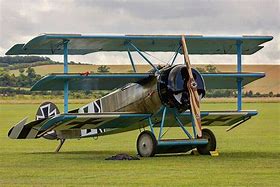

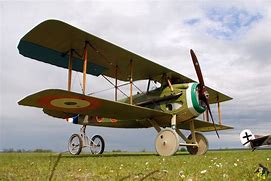

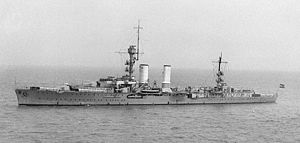
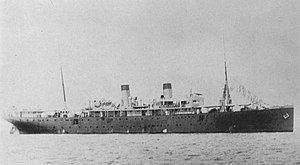
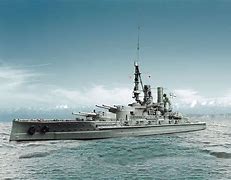
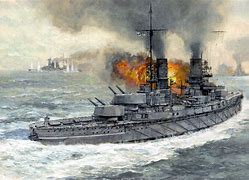

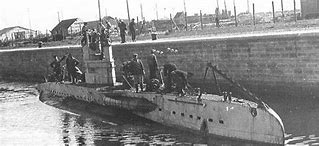
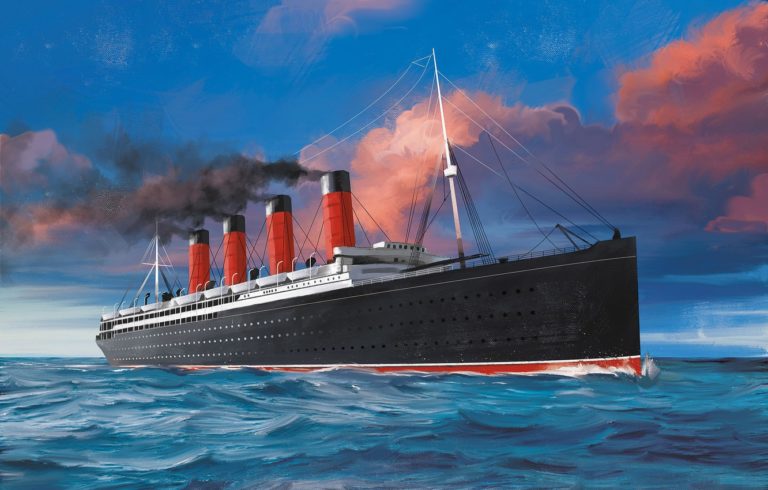
WW1 - Pacific Theater

World War 1 - Pacific - Sea Warfare

German Samoa was a German protectorate from 1900 to 1919, consisting of the islands of Upolu, Savai’i, Apolima and Manono, now wholly within the independent state of Samoa, formerly Western Samoa. Samoa was the last German colonial acquisition in the Pacific basin, received following the Tripartite Convention signed at Washington on 2 December 1899. It was the only German colony in the Pacific, aside from the Kiautschou Bay concession in China, that was administered separately from German New Guinea. t the behest of the United Kingdom the colony was invaded unopposed on the morning of 29 August 1914 by troops of the Samoa Expeditionary Force. The campaign to take Samoa ended without bloodshed after over 1,000 New Zealanders landed on the German colony, supported by an Australian and French naval squadron. Vice Admiral Count Maximilian von Spee of the German East Asia Squadron gained knowledge of the occupation and hastened to Samoa with the armored cruisers SMS Scharnhorst and SMS Gneisenau, arriving off Apia on 14 September 1914. He determined however that a landing would only be of temporary advantage in an Allied dominated sea and the cruisers departed. New Zealand occupied the German colony through to 1920, then governed the islands until independence in 1962.
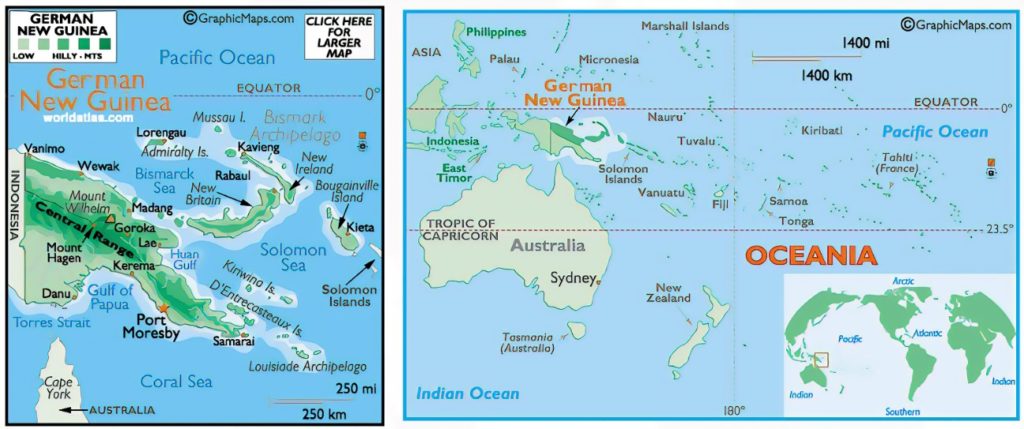
Australian forces attacked German New Guinea in September 1914: 500 Australians encountered 300 Germans and native policemen at the Battle of Bita Paka; the Allies won the day and the Germans retreated to Toma. A company of Australians and a British warship besieged the Germans and their colonial subjects, ending with German Governor Eduard Haber‘s surrender of the entire colony. Despite Haber’s capitulation order, a variety of isolated German units in New Guinea continued to resist after the fall of Toma. These small German forces generally capitulated without bloodshed once confronted by Australian units. On 11 October 1914, the German armed yacht Komet and her 57 crew surrendered after their ship was boarded taken by surprise at Talasea. In December 1914, a German officer near Angorum attempted to resist the Allied occupation with thirty native police but his force deserted him after they fired on an Australian scouting party and he was subsequently captured. By 1915, the only uncapitulated German force was a small expedition under the command of Hermann Detzner which managed to elude Australian patrols and hold out in the interior of the island until the end of the war.
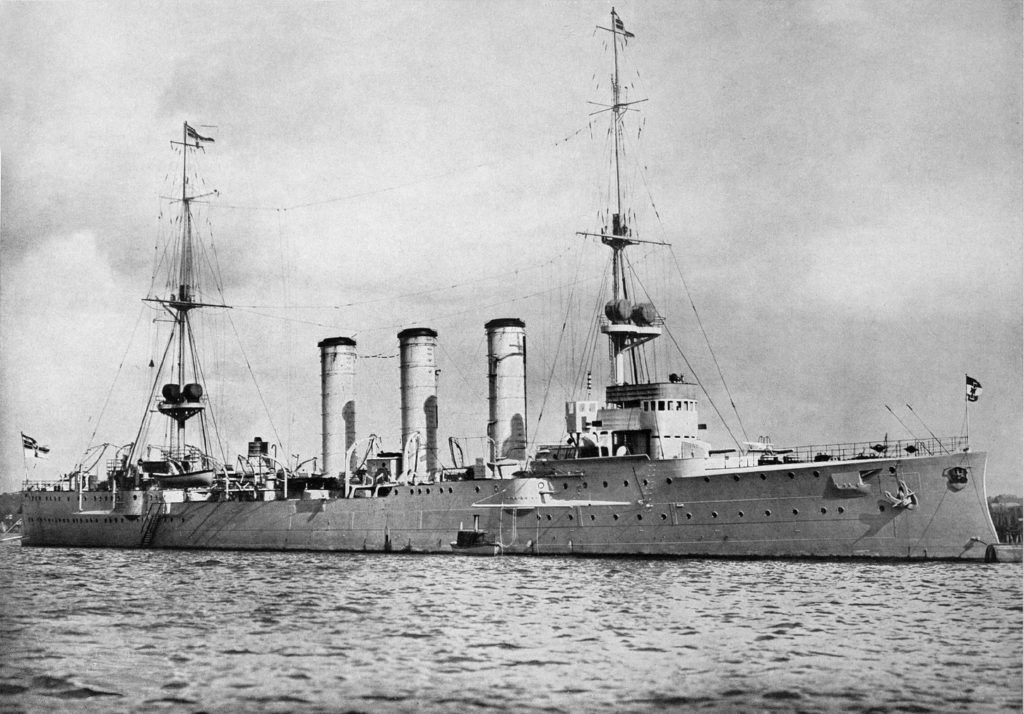
SMS Emden was left behind by Admiral Graf Maximilian von Spee when he began his retreat across the Pacific. The ship won the Battle of Penang, in which the Germans sank a Russian cruiser and a French destroyer. Emden also harried merchant vessels of the Allies and destroyed over thirty of them. She went on and bombarded Madras, India, causing damage to British oil tanks and sinking an Allied merchant ship. The attack caused widespread panic in the city and thousands of people fled from the coast, fearing that the Germans may have begun an invasion of India as a whole.
After a very successful career as a merchant raider, Emden was engaged by HMAS Sydney at the Battle of Cocos, where the German vessel was destroyed. A group of sailors under the command of Hellmuth von Mücke managed to escape towards the Arabian peninsula which was then part of the Ottoman Empire, an ally of the German Empire during World War I.

In August 1917 SMS Seeadler was wrecked at the island of Mopelia in French Polynesia so the Germans established a small colony on the island which housed them and several Allied prisoners, most of whom were American. Eventually when starvation proved to be an urgent concern, Luckner and his crew left the prisoners on the uninhabited island, from which they were eventually rescued, and set sail in a lifeboat for Fiji. There, on September 5, Luckner captured a French schooner named Lutece and renamed her Fortuna. After that they headed for Easter Island and again their ship was wrecked when it grounded on a reef. Subsequently, the Germans were interned by the Chileans on October 5, 1917, which ended the journey. During the entire cruise only one man perished, due to an accident
